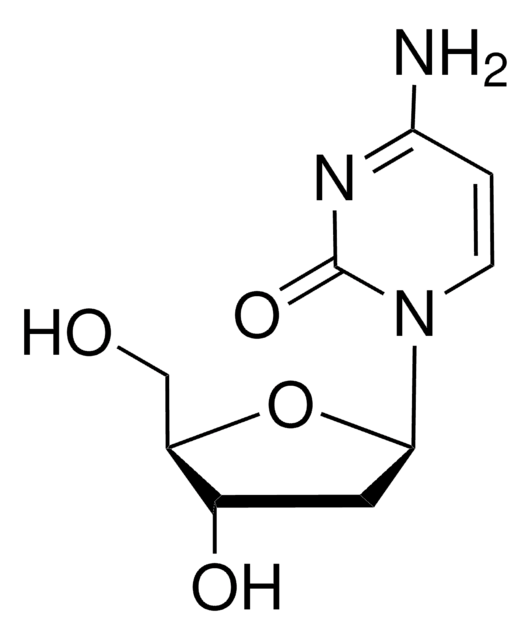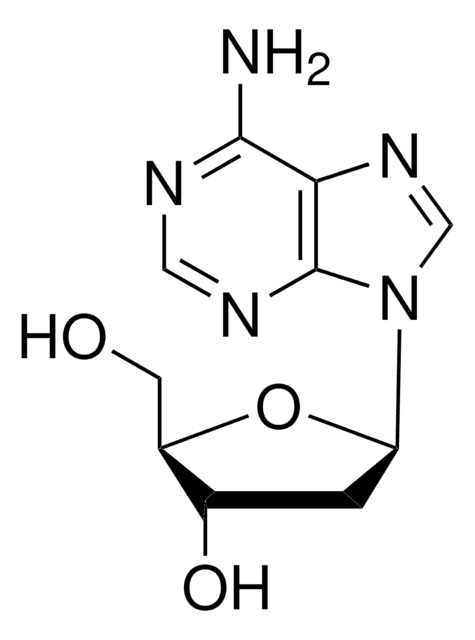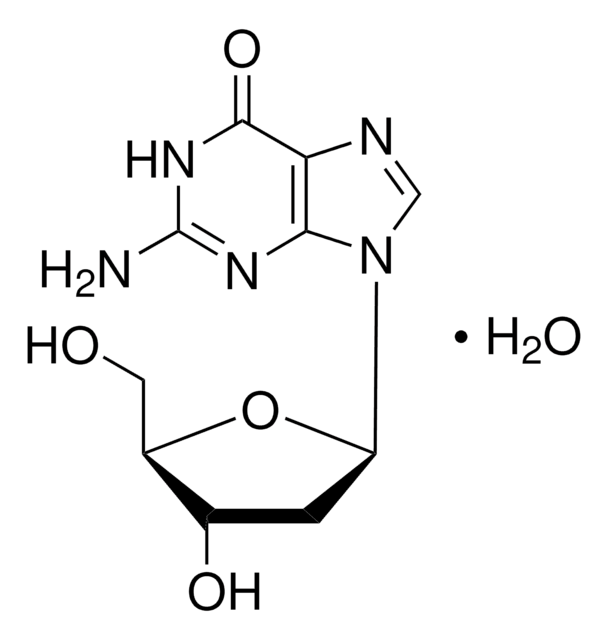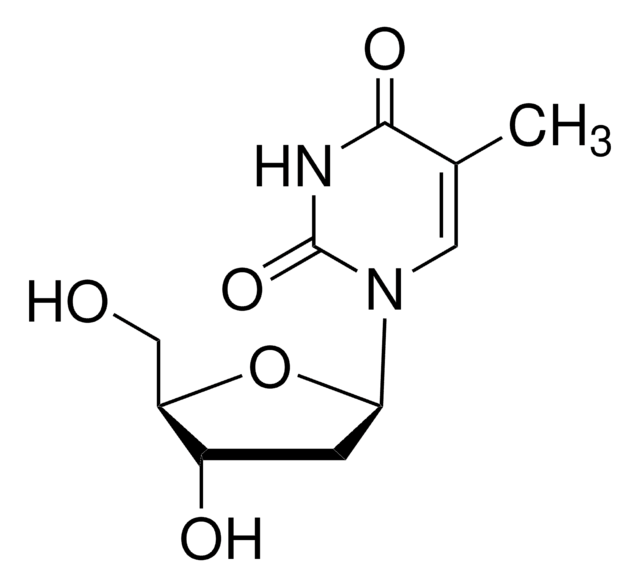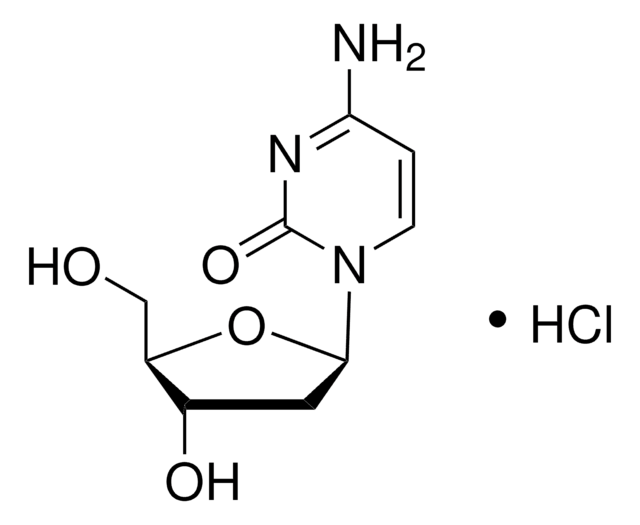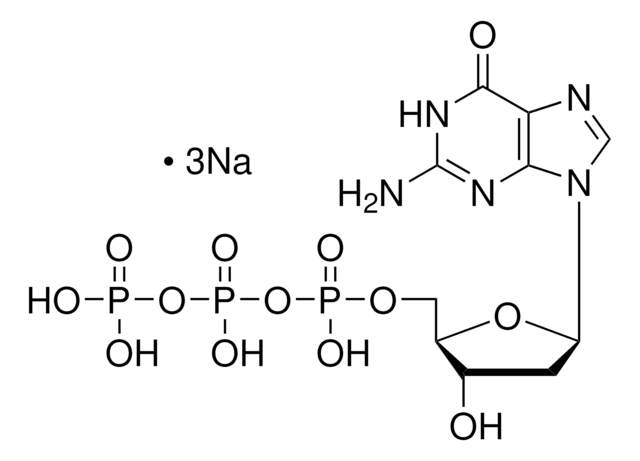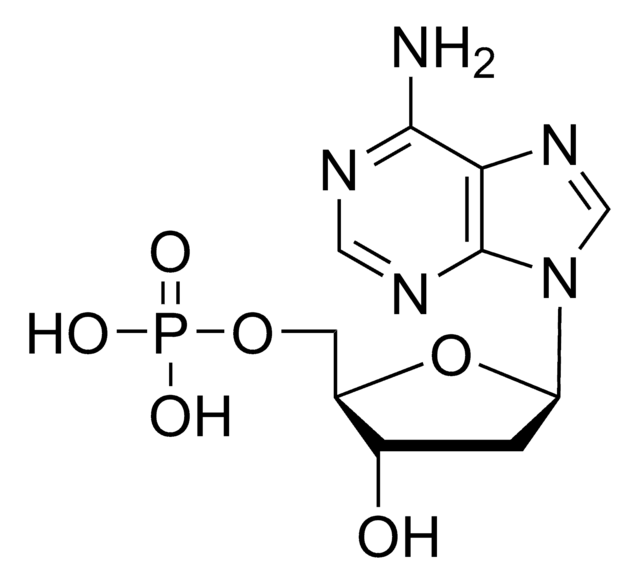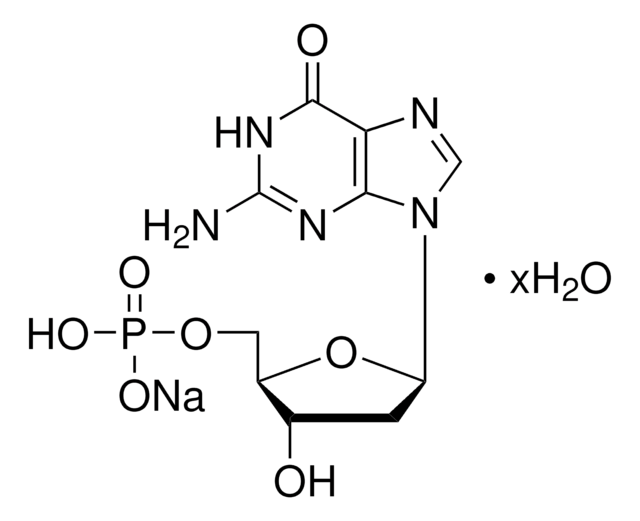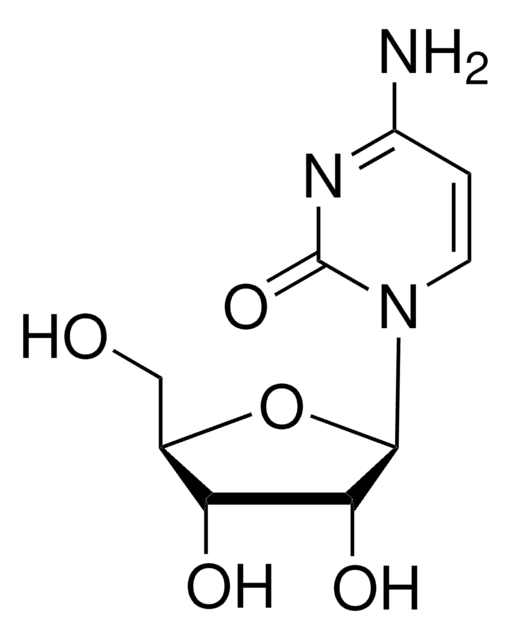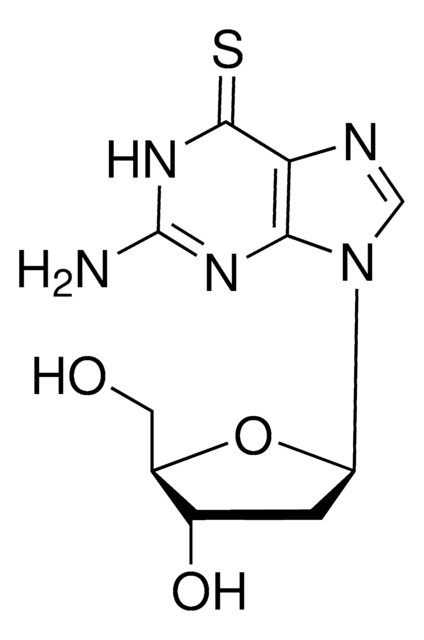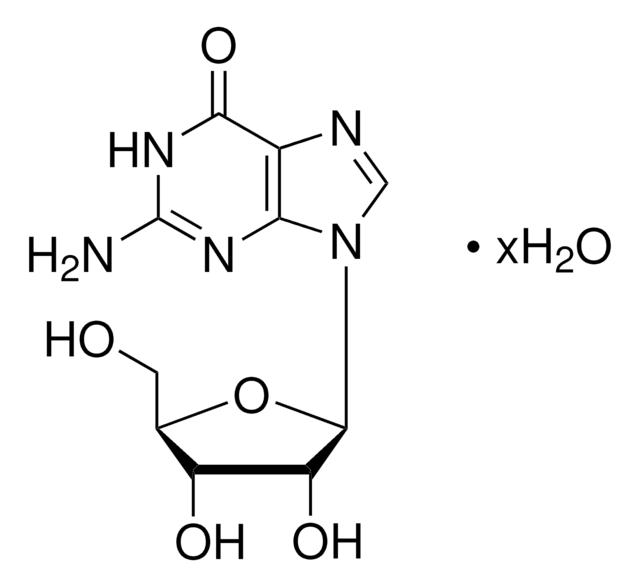D7145
2′-Desoxyguanosin Monohydrat
99-100%
Synonym(e):
9-(2-Deoxy-β-D-ribofuranosyl)-guanin, Guanindeoxyribosid
About This Item
Empfohlene Produkte
Biologische Quelle
synthetic (organic)
Assay
99-100%
Form
powder
Löslichkeit
1 M NH4OH: 50 mg/mL, clear, colorless
SMILES String
O.NC1=Nc2c(ncn2[C@H]3C[C@H](O)[C@@H](CO)O3)C(=O)N1
InChI
1S/C10H13N5O4.H2O/c11-10-13-8-7(9(18)14-10)12-3-15(8)6-1-4(17)5(2-16)19-6;/h3-6,16-17H,1-2H2,(H3,11,13,14,18);1H2/t4-,5+,6+;/m0./s1
InChIKey
LZSCQUCOIRGCEJ-FPKZOZHISA-N
Suchen Sie nach ähnlichen Produkten? Aufrufen Leitfaden zum Produktvergleich
Verwandte Kategorien
Anwendung
- to study its effect on mitochondrial DNA copy number in deoxyguanosine kinase (dguok) mutant zebrafish,
- in tissue culture medium for deoxyribonucleotide triphosphate (dNTP) synthesis,
- in RPMI (Roswell Park Memorial Institute)-1640 medium to eliminate the endogenous thymocytes
Biochem./physiol. Wirkung
Lagerklassenschlüssel
11 - Combustible Solids
WGK
WGK 3
Flammpunkt (°F)
Not applicable
Flammpunkt (°C)
Not applicable
Analysenzertifikate (COA)
Suchen Sie nach Analysenzertifikate (COA), indem Sie die Lot-/Chargennummer des Produkts eingeben. Lot- und Chargennummern sind auf dem Produktetikett hinter den Wörtern ‘Lot’ oder ‘Batch’ (Lot oder Charge) zu finden.
Besitzen Sie dieses Produkt bereits?
In der Dokumentenbibliothek finden Sie die Dokumentation zu den Produkten, die Sie kürzlich erworben haben.
Kunden haben sich ebenfalls angesehen
Unser Team von Wissenschaftlern verfügt über Erfahrung in allen Forschungsbereichen einschließlich Life Science, Materialwissenschaften, chemischer Synthese, Chromatographie, Analytik und vielen mehr..
Setzen Sie sich mit dem technischen Dienst in Verbindung.